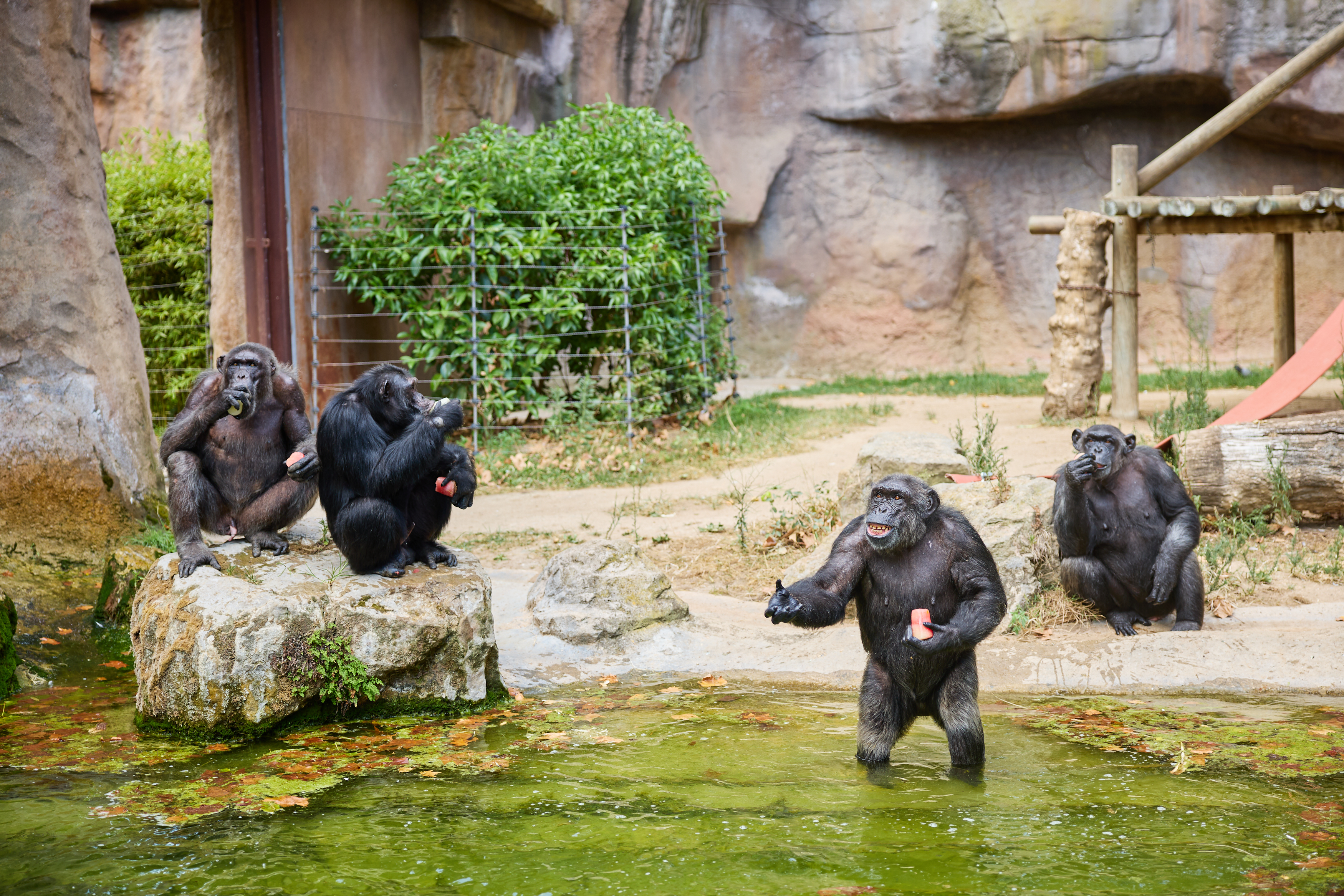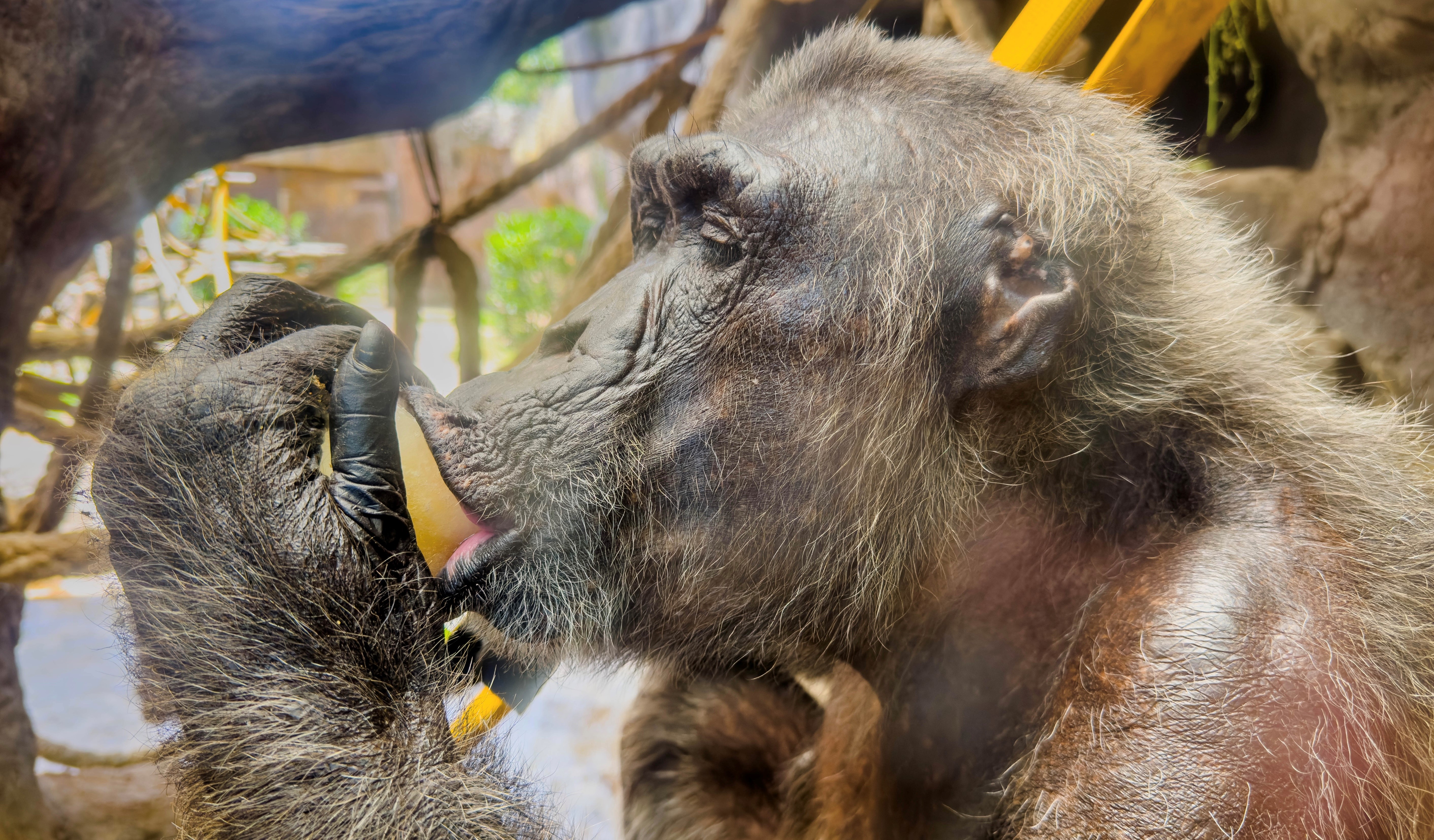Just like every year, the Zoo de Barcelona has taken a series of special measures for the summer months to mitigate the effects of high temperatures on the animals in its care. This care complements the daily tasks carried out by the zoo keepers looking after the animals and is in line with how the Zoo constantly strives for animal health and welfare.
Due to its prime location near Ciutadella Park and its lush vegetation, the Zoo de Barcelona records an average of three degrees lower temperatures than the rest of the city. Still, during episodes of intense heat, the Zoo activates a special protocol to ensure that different species are better able to handle the heat.
One of the priorities is ensuring that the animals are well hydrated. To do this, the Zoo puts more drinking troughs in its facilities and refills the water more often to ensure it is cool. It also steps up efforts to clean and replenish the baths and mud patches used by some species, which play an important role in regulating the temperatures of animals like warthogs and elephants.
Other species like bison, buffaloes and elephants are also wetted down using hoses or sprinklers. The cats’ and bears’ indoor areas are equipped with fans to stir up the air and control the temperature.
The food is also adapted during hot periods. Some examples are frozen fruit and ice cream made of broth or fruit juice offered to the primates, ice cubes with fruit for giraffes and worm-based iced drinks for the mongooses and meerkats.

The Zoo de Barcelona lowers its water consumption
All these actions are being done while trying to save as much water as possible, given the sustained drought over the past few years. Within this context, the Zoo has been taking water control and savings measures for over a year, making it possible to go from consuming 1,500 m3 in 2018 to 900 m3 today.
The water control and conservation measures in place at the Zoo include implementing a water consumption monitoring system and another system to detect leaks. It has also lowered the frequency with which it cleans and empties the lakes outside the summer season while always ensuring the animals’ hygiene and well-being.
Plus, a drip irrigation system has been installed in the new landscaped areas being built, and tests with plants with lower water needs are also being conducted.
A pilot plant to regenerate water left over from cleaning the Zoo
Parallel to these measures to use water more efficiently, for the past few months, the Zoo de Barcelona has participated in the project “Water resources management in zoos – FIT4USE Water recirculation technology” funded by the European Union via the LIFE programme. This project aims to find solutions so zoos can optimise their use of water, an essential resource in their day-to-day operations.
Within the framework of this project, the Zoo will have a pilot regeneration plant for water left over from cleaning its facilities. The plant will operate using a system similar to wetlands, where plants and microorganisms serve as natural purification systems. The treated water will be reused within the Zoo for watering, cleaning or filling naturalised ponds.
Awareness-raising will be an important part of the project, which is people-centred. Interpretative and interactive elements will be installed around the plant to allow visitors to learn about and appreciate the key role played by wetlands, heavily threatened ecosystems which are retreating on the planet, as well as their crucial importance in the water cycle as reservoirs and filters and their high value in preserving biodiversity.
The plant, which will be ready by the summer of 2025, will be located near the naturalised ponds and designed so visitors can see how the water is filtered. The Zoo previously engaged in educational actions related to this project, like a survey to assess citizens’ level of knowledge and awareness of water management and the consequences of climate change.
This LIFE project is coordinated by the Technical University of Liberec and has a budget of around 2.7 million euros. In addition to the Zoo de Barcelona, other participants include the University of Barcelona Solidarity Foundation, the University of Girona via the Chemical and Environmental Engineering Laboratory research group, the Liberec Zoo and the Photon Water Technology group, experts in water treatment. There is also a group of external experts involving the Valencia Biopark and the Cabárceno Nature Park, among others.
![]()



